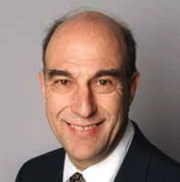
HUD Secretary nominee Ben Carson waits for his meeting with incoming Senate Banking, Housing and Urban Affairs Committee chairman Sen. Mike Crapo (R-ID). (Photo By Bill Clark/CQ Roll Call)
This post originally appeared at Economic Policy Institute.
President-elect Donald Trump proposes to nominate Ben Carson to head the Department of Housing and Urban Development (HUD). Carson has expressed opposition to the Obama administration’s new HUD requirement that cities and suburbs develop plans to end their segregation or face possible loss of federal funds. He calls this “social engineering,” and says that such well-intentioned programs have unintended consequences that their proponents later come to regret. Instead, he says, emphasis should be placed on revitalizing distressed minority neighborhoods in central cities.
What Carson’s view ignores is that the racial segregation of every metropolitan area in the nation is also the result of “social engineering” — the purposeful efforts of federal, state and local governments to create and enforce the residential separation of the races. What the Obama administration has begun are plans to undo this social engineering. Failing to continue these plans doesn’t avoid social engineering — it perpetuates it.
Carson has said that his experience growing up in Detroit gives him insight into the plight of distressed segregated urban neighborhoods, but he may not be familiar with how, in Detroit, those neighborhoods deteriorated. Here are some examples of facts he should know, to place decisions about whether to desegregate those neighborhoods in their proper context:
- In the 1940s and 50s, one of the most important issues in Detroit’s mayoral elections was where public housing should be placed. Two successful candidates, Mayors Edward Jeffries and Albert Cobo, vowed to place public housing only in already heavily black neighborhoods. In 1948-49, the Detroit City Council held hearings on 12 proposed public housing projects in outlying (predominantly white) areas. Mayor Cobo vetoed all 12; only housing in predominantly black areas was approved. At the time, there was an enormous civilian housing shortage, and both whites and blacks needed public housing. Had the rejected sites been approved, families of both races would have resided in public housing located throughout the city, setting an integrated pattern that might well persist to this day. Failing to permit this was the social engineering of segregation.
- During this period, one developer applied to the federal government for financing to construct housing in Detroit that would be restricted to white families only. Fearing possible future integration, the Federal Housing Administration approved his application only on condition that he construct a concrete wall, 6 feet high and a foot thick, to separate the proposed development from a neighborhood where African-Americans lived. Thus did the federal government socially engineer the segregation of Detroit.
- During World War II, the federal government constructed a bomber plant outside Detroit in Willow Run, then a rural, undeveloped area where there was no previous pattern of segregation. Nonetheless, the government built housing for families whose members worked in Willow Run, and restricted the housing to whites only. African-Americans not only couldn’t live near the plant, with no way to get there for the most part they couldn’t even work in it. This was social engineering of segregation.
- Hamtramck is a city almost entirely encircled by Detroit. In the 1950s, it was overwhelmingly Polish. The city’s 1959 master plan called for a “program of population loss,” referring to its small number of African-Americans. In 1962, with federal urban renewal funds, the city began to demolish African-American neighborhoods. Twelve years later, a federal appeals court concluded that HUD officials knew that the purpose of the plan was to force African Americans out of the city and into Detroit’s African-American areas. This was social engineering. The court opinion stated: “The record supports a finding that HUD must have known of the indications of overt prejudice among some of the persons involved in carrying out the urban renewal projects of the City.”
- Public officials in Detroit suburbs adopted explicit policies to exclude African-Americans, preventing them from leaving the neighborhoods where Ben Carson grew up. In 1956, for example, the mayor of Dearborn, a suburb to the west of Detroit, announced, “Negroes can’t get in here. Every time we hear of a Negro moving in, we respond quicker than you do to a fire. That’s generally known.” One black family that purchased a Dearborn home in defiance of the city policy found its gas turned off and garbage uncollected, and finally moved out. The mayor of Warren, a suburb to the north of Detroit, announced “I won’t tolerate Warren being used as a guinea pig for integration experiments.” Other suburbs maintained similar policies, social engineering the concentration of African-Americans in the city itself.
Policies like these not only segregated the Detroit metropolitan area, but every metropolitan area in the nation. Certainly, private prejudice was involved, as well as private discrimination. But without the social engineering of federal, state and local government, the nation would have a much more integrated landscape than it does today, and the distressed inner-city conditions that Ben Carson proposes to address would be, at the least, much less severe.
As one opposed to social engineering, a Secretary Carson could take several modest steps to reverse it. At a minimum, he should make sure that HUD enforces the new rule that jurisdictions receiving federal funds make plans to desegregate — taking actions like, for example, modifying zoning ordinances to permit construction of more modest single family homes and mixed income apartment complexes. Virtually every jurisdiction, even the most affluent, comes under this rule, because all receive federal funds for water and sewer projects, greenspace and other programs that have nothing to do with poverty.
One important HUD program is the “Section 8″ voucher program that provides subsidies to low-income families, permitting them to rent apartments at market prices. But the subsidies are based on average rents in a metropolitan area — more than enough to get apartments in low-cost, low-income, usually segregated neighborhoods, but not enough to get apartments in integrated neighborhoods where jobs are accessible, student performance in schools is high, and healthy food is available. As a result, the Section 8 program reinforces racial segregation. The Obama administration has adopted a new rule, scheduled to take effect next month, adjusting voucher amounts so that they are sufficient to rent housing in better neighborhoods. Carson should enforce this rule, helping to reverse the social engineering that created distressed urban areas.
He should also use his influence with other cabinet secretaries whose departments pursue policies that reinforce urban segregation. The Treasury Department, for example, grants tax credits to developers who construct low-income housing. These tax credits are mostly used to create apartments in already segregated neighborhoods, because land is cheaper there. Carson should persuade the Treasury Secretary to re-examine this program, creating incentives to build in neighborhoods where opportunity for jobs, education and quality of life is greater.
President-elect Trump has vowed to pass a substantial infrastructure program. As spokesperson within the cabinet for the “inner cities,” Carson should make sure that such a program emphasizes transportation infrastructure — dedicated busways or light rail, for example — that facilitate the ability of low-income neighborhood residents to find jobs in suburban areas.
Most importantly, he should press the attorney general to reverse the discriminatory “drug war” and mandatory minimum sentencing rules that play a big role in devastating the African-American neighborhoods that Carson says he wants to revitalize. These rules result in the imprisonment of young African-Americans, often for long periods and often for nonviolent offenses for which whites face no or little punishment. Current trends predict that as many as one in three African-American men born today can expect to spend some time in prison during their lifetimes, most for nonviolent crimes.
In addition to reforming federal criminal justice policy, the Justice Department also can require local jurisdictions to reform their own discriminatory patterns and practices. When it investigated Ferguson, Missouri, last year, the department found that African Americans were stopped by police more frequently than whites, but of those who were stopped and searched, more whites were found to be carrying illegal drugs than African-Americans. The department required Ferguson to adopt reforms to end this discrimination. It should conduct similar investigations of other cities. Nothing would be more powerful in improving the lives of low-income urban minority families than policies that end the incarceration of young men for trivial or pretextual reasons and returns those unjustly imprisoned to their communities, permitting them to reunite with their families and lead productive lives.
All of this depends on national economic policies that reduce unemployment. Many financial experts expect that the Federal Reserve Board will soon react to strong economic growth by raising interest rates. If it does so, job creation will be slowed, and African-Americans will pay the heaviest price. Unemployment of African-Americans remains at nearly nine percent, 75 percent greater than the white rate. Ben Carson should now, even before his confirmation, use his newly acquired credibility as the administration’s proposed spokesperson for the inner cities to issue a public plea for the Federal Reserve to keep interest rates low. As one who is particularly sensitive to how policies can have unintended consequences, he certainly understands that rising interest rates can devastate low-income neighborhoods, offsetting any efforts he may make as housing secretary to improve conditions in them.




